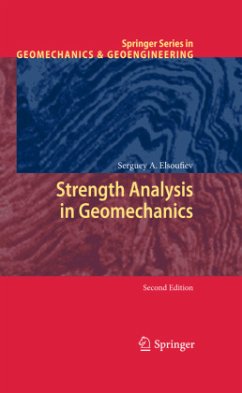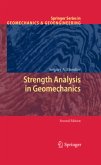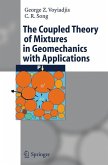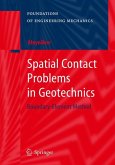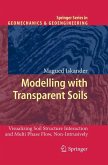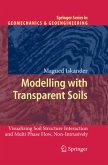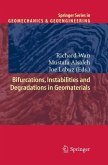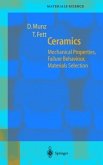It is hardly possible to ?nd a single rheological law for all the soils. However theyhavemechanicalproperties(elasticity,plasticity,creep,damageetc. )that are met in some special sciences, and basic equations of these disciplines can be applied to earth structures. This way is taken in this book. It represents the results that can be used as a base for computations in many ?elds of the Geomechanics in its wide sense. Deformation and fracture of many objects include a row of important e?ects that must be taken into account. Some of them can be considered in the rheological law that, however, must be simple enough to solve the problems for real objects. On the base of experiments and some theoretical investigations the c- stitutive equations that take into account large strains, a non-linear unsteady creep, an in?uence of a stress state type, an initial anisotropy and a damage are introduced. The test results show that they can be used ?rst of all to ?nding ultimate state of structures - for a wide variety of monotonous lo- ings when e?ective strain does not diminish, and include some interrupted, step-wise and even cycling changes of stresses. When the in?uence of time is negligible the basic expressions become the constitutive equations of the pl- ticity theory generalized here. At limit values of the exponent of a hardening law the last ones give the Hooke's and the Prandtl's diagrams.
From the reviews:
"This book presents a new analysis of the solutions for geomechanical problems, tacking into account nonlinear effects, fracture and damage of structures. ... The work is organized in 6 chapters, followed by 14 appendices and a bibliography. ... The book is recommended to civil engineers and geologists." (Olivian Simionescu, Zentralblatt MATH, Vol. 1116 (18), 2007)
"This book presents a new analysis of the solutions for geomechanical problems, tacking into account nonlinear effects, fracture and damage of structures. ... The work is organized in 6 chapters, followed by 14 appendices and a bibliography. ... The book is recommended to civil engineers and geologists." (Olivian Simionescu, Zentralblatt MATH, Vol. 1116 (18), 2007)

